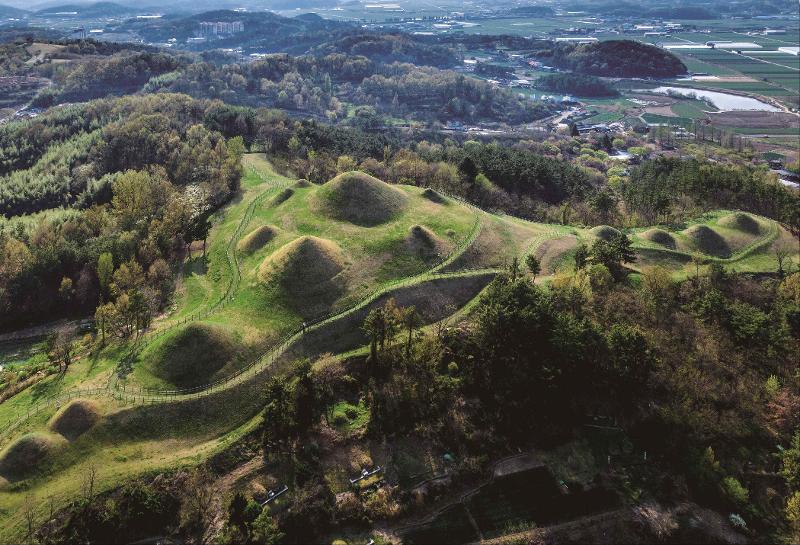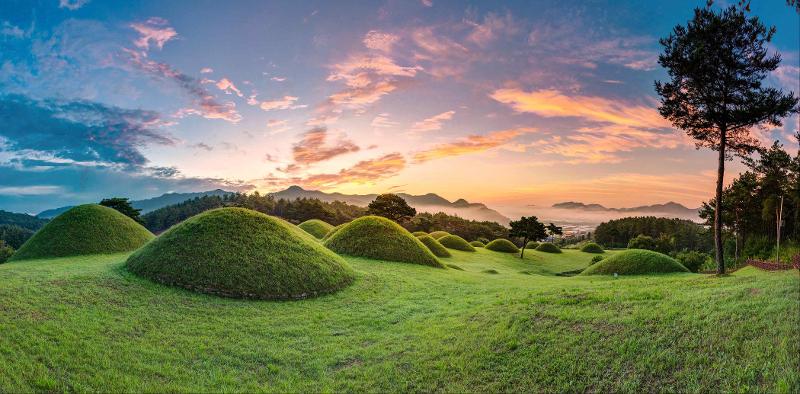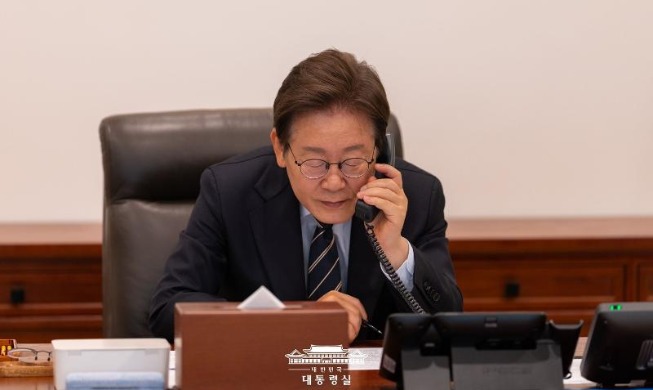
The UNESCO World Heritage list has added the seven tomb clusters of Gaya Tumuli including Gyo-dong and Songhyeon-dong Tumuli (shown) in Changnyeong-gun County, Gyeongsangnam-do Province.
By Margareth Theresia
Photos = Cultural Heritage Administration
Seven tumuli, or a mound of earth and stones raised over a grave, that show the history and civilization of the ancient Gaya Kingdom have gained UNESCO World Heritage status.
The Cultural Heritage Administration on Sept. 17 said UNESCO's World Heritage Committee (WHC) added the Gaya Tumuli to the World Heritage list at its 45th session in Riyadh, Saudi Arabia.
The seven tomb clusters show the architectural style of graves from the ancient Gaya Kingdom (42-562), which lasted from the first to sixth centuries on the Korean Peninsula.
The seven are Yugok-ri and Durak-ri Tumuli in Namwon, Jeollabuk-do Province; Jisan-dong Tumuli in Goryeong, Gyeongsangbuk-do Province; Daeseong-dong Tumuli in Gimhae, Gyeongsangnam-do Province; Marisan Tumuli in Haman-gun County, Gyeongsangnam-do; Gyo-dong and Sohyeon-dong Tumuli in Changnyeong-gun County, Gyeongsangnam-do; Songhak-dong Tumuli in Goseong-gun County, Gyeongsangnam-do, and Okjeon Tumuli in Hapcheon-gun County, Gyeongsangnam-do.
The WHC said the Gaya Tumuli are believed to possess "outstanding universal value" as material evidence of a rare political structure that maintained autonomy and a horizontal relationship with neighboring countries, showing the diversity of ancient civilizations in East Asia.
The Gaya Tumuli made the tentative World Heritage list in 2013, and an application was submitted to UNESCO in January 2021. Completion of an assessment by the International Council on Monuments and Sites, a UNESCO advisory and review body, led to a recommendation for listing opinion in May this year for inclusion on the World Heritage list.
On Sept. 17, Gaya Tumuli was named the country's 16th World Heritage.

Okjeon Tumuli in Hapcheon-gun County, Gyeongsangnam-do Province
margareth@korea.kr
